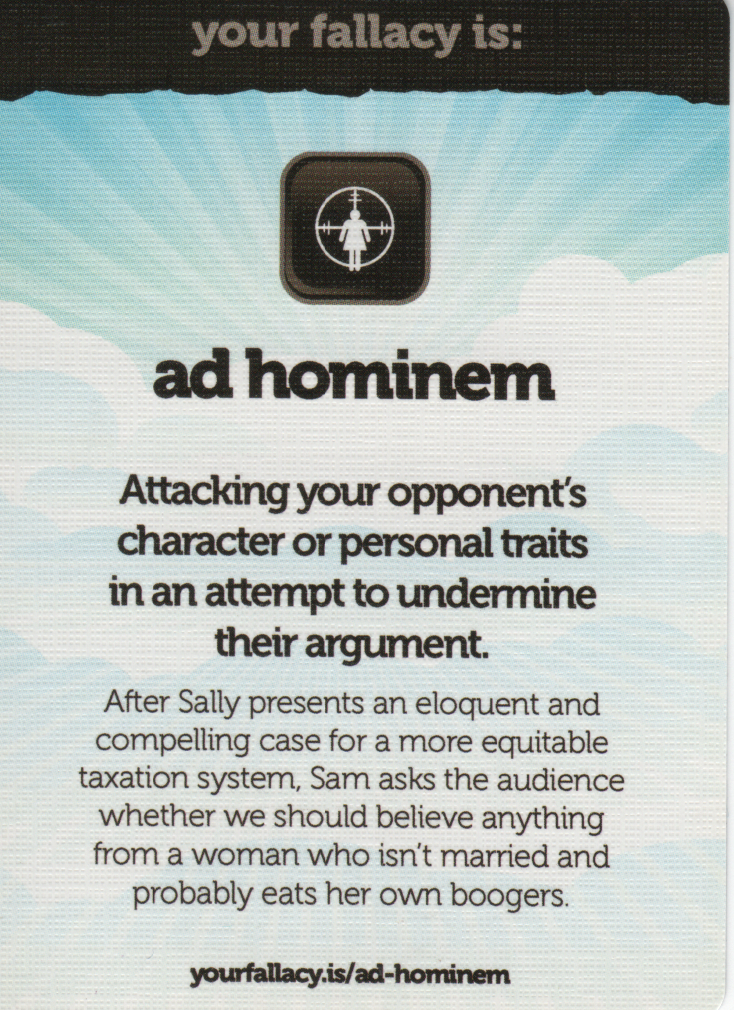
Ad hominem. Famed everywhere from the hallowed (cough) halls of our National Legislature to playgrounds at Pleasant Elementary School. Has a long history, too. (Probably the first fallacy that hominids came up with after the invention of language: “How can you trust Grokk with building a fire? I heard he ran away from that big mastodon at the last hunt.”)
Searching the Interwebs for ad hominem brings up all kinds of memes, but I like this one.

Technically, the fallacy of ad hominem is one of relevance. To draw a conclusion based on irrelevant (often personal) premises is the mistake here. It can be an easy one to make, especially in the midst of a heated argument, but it’s still worth remembering that it’s fallacious.
I’m not sure what one can actually do about this particular fallacy; it appeals to the emotional centers by creating doubt around a person making a claim, e.g.:
“There’s very good evidence that national healthcare is good for a country and its people.”
“I don’t see how you can think that, as you’re a Republican!”
Note that this is also very close to the tu quoque fallacy from my last post. The tu quoque is technically a form of ad hominem. (For example, imagine the respondent above saying instead, “I don’t see how you can think that, as you work for a health insurance company!”)
It’s an interesting mental exercise to imagine what our world would be like if all arguments were debated without ever resorting to these kinds of fallacies of relevance – if all arguments were strictly debated based on their relative merits and flaws.